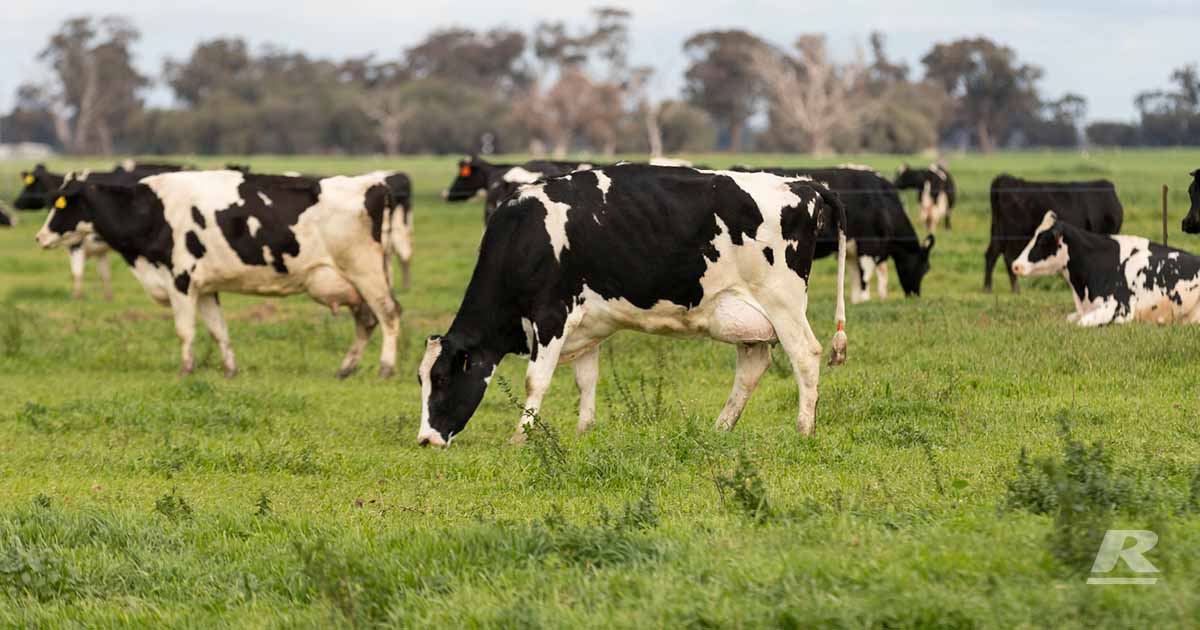Boosting pasture growth: A Farmer’s Guide to successful grazing rotation
The unusually dry February this year poses a unique challenge for farmers, particularly those managing rye grass-dominant pastures. Thoughtful management strategies are essential to ensure optimum pasture growth for both quality and quantity after the Autumn break and throughout the growing season. Transitioning into an effective grazing rotation in a Perennial Rye Grass (PRG)-based system requires careful consideration of several key factors.
Our Reid Stockfeed experts weigh in on key strategies:
Avoid over-grazing
Over-grazing perennial pastures during the Summer and into Autumn can significantly delay pasture growth when the Autumn break finally arrives. It’s crucial to exercise restraint and avoid putting excessive pressure on the pasture during this critical period.
Confinement and nutrition
When possible, confine stock to a restricted area and provide them with adequate nutrition while waiting for paddocks to ‘kick into gear’ and initiate growth. This approach allows for better control over the pasture’s development and ensures stock health during this crucial transition phase.
Strategic stock-free period
Allowing the majority of your farm’s effective grazing area to be stock-free for up to a month is a strategic move with substantial long-term benefits. While this may involve additional expenses, especially for freshly-calved cows requiring extra fodder and concentrates, the disciplined approach pays off over the growing season. By transitioning from Summer dormancy to Autumn growth, the pasture gains both cover and mass.
Monitoring PRG plant growth
Actively growing PRG plants support three leaves at once. Monitoring individual plants for leaf stage in representative paddocks during the first month is crucial. The ideal grazing stage for starting a rotation is between leaf-stage 2 and 3. This monitoring provides insights into when to commence the grazing rotation and helps assess the need for supplementary feed.
Commence grazing at optimal conditions
Start the grazing rotation when the average pasture cover is approximately 2,400kgDM, and/or the leaf stage is between 2 and 3 in monitored paddocks. Consulting with an agronomist or experienced pasture consultant can help identify the specific pasture mass for your farm.
Avoid excessive pressure on plants
Depending on supplements and herd size, avoid grazing before leaf-stage 2 to prevent excessive pressure on plants. Grazing after the 3-leaf stage can lead to wastage of quality Dry Matter. Striking the right balance is crucial for optimal regrowth and pasture longevity.
Ensure adequate paddock cover
There must be an adequate number of paddocks with satisfactory pasture cover to support the demands of your herd. Applying 30-40kg/ha Nitrogen to lower cover paddocks, if moisture and soil fertility permit, can bridge any potential gaps in the rotation.
Maintain grazing residual
Adjust grazing areas to achieve a 4-6cm grazing residual. This helps maintain the health of the pasture and encourages regrowth for subsequent rotations.
Exclude newly sown paddocks
Exclude newly sown and oversown paddocks from the rotation until you are confident that the new plants will not be completely removed during grazing. This helps prevent pugging damage and ensures the successful establishment of the new rotation.
Invest in education
Consider participating in programs like ‘Feeding Pasture For Profit’ (FPFP), a practical and hands-on course developed by Victorian farmers and consultants. This program, delivered through Regional Dairy Boards, offers valuable insights and support for on-farm rotation management.
By carefully implementing these strategies, farmers can navigate the challenges of dry weather and optimise their PRG-based grazing rotations for sustained pasture growth and quality feed throughout the growing season.
For personalised insights into optimising your herd’s nutrition and pasture management, consult with the experts at Reid Stockfeeds. Our team is dedicated to assisting you in making informed decisions for the well-being and productivity of your cows. Contact us today to explore our range of high-quality feed products and discover tailored solutions that align with your farm’s goals. Call 1300 REID FEED or enquire here >
Author
Joy Coulson
Sales & Nutrition Account Manager
